New research data has been published on paraxanthine, showing increased energy expenditure compared to placebo (100 calories in 3 hours) -- yet it decreased appetite and heart rate![1]
In the past year, there's been a ton of talk about enfinity paraxanthine, a caffeine metabolite that's poised to replace caffeine in countless dietary supplement applications.
Caffeine has some competition
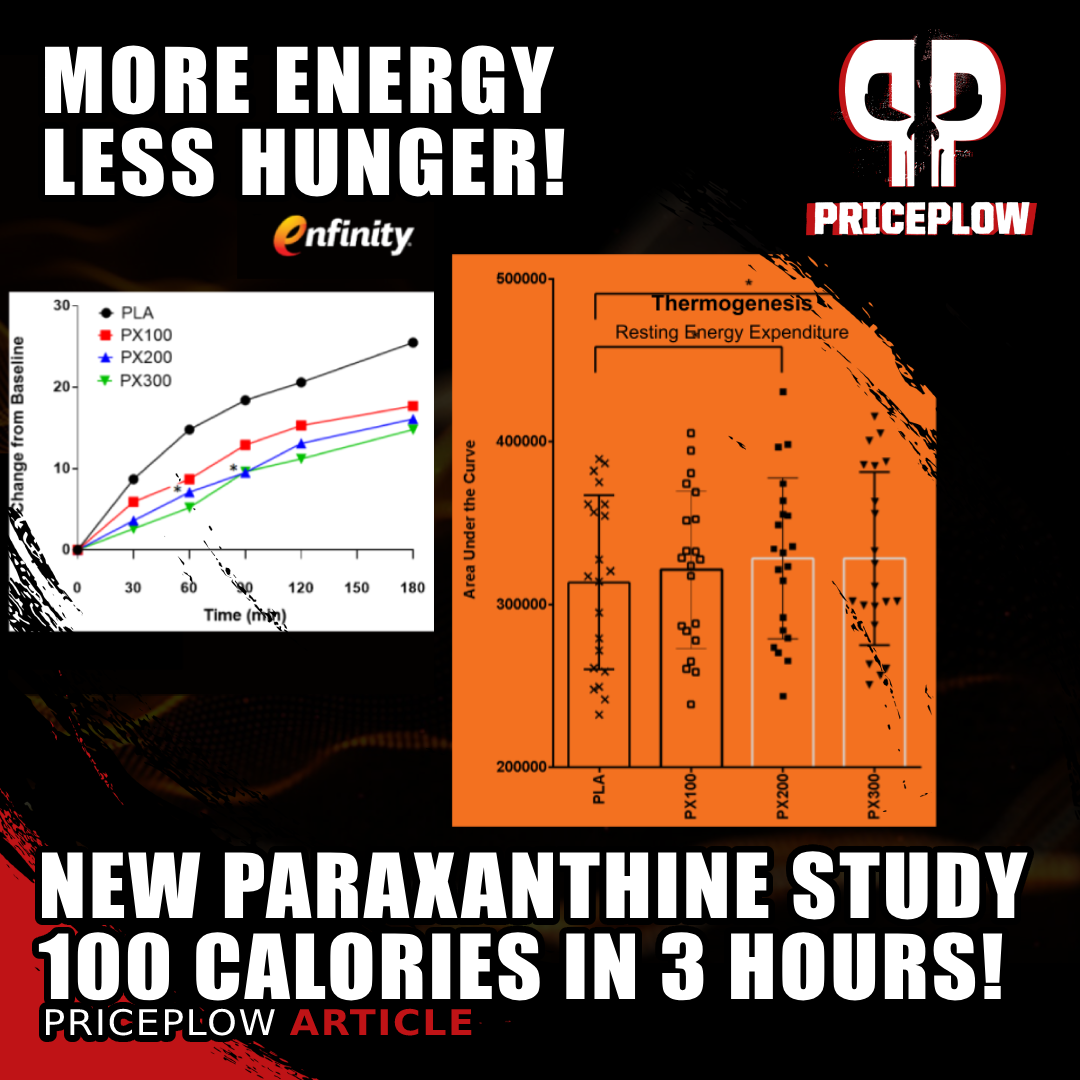
New research data has been published on enfinity (paraxanthine), showing increased energy expenditure compared to placebo (100 calories in 3 hours) -- yet it decreased appetite and heart rate![1]
Paraxanthine's big selling point is the fact that it has fewer side effects than caffeine, with a shorter and more consistent half-life. Whereas caffeine has an average half-life of 4 hours, paraxanthine's is roughly 3,[2] which makes it a better choice overall, but particularly for people who metabolize methylxanthines more slowly than the population average – so-called slow metabolizers.
The above details are described in our comprehensive article titled Paraxanthine: Caffeine's Major Metabolite for Laser-Targeted Energy. A key point is that using paraxanthine side-steps caffeine's other metabolites, theophylline and theobromine,[2,3] which have far longer half-lives and bigger side effect profiles.
On top of its superior pharmacokinetics, paraxanthine appears to do everything caffeine can do, and the data is growing showing that enfinity actually outperforms caffeine in certain applications.
For example, in early 2024 a study come out showing that for subjects who had just completed a 10-kilometer run, paraxanthine had a bigger positive impact on cognition than caffeine.[4] That study will be covered soon on the PricePlow Blog, but first, we're going to cover this new thermogenic data:
New Paraxanthine Study – Paraxanthine Cranks Up Caloric Burn and Lipolysis
Today, we're analyzing yet another data point in paraxanthine's favor – from a study demonstrating that, like caffeine, paraxanthine is capable of increasing the body's energy expenditure.[1]
There's a lot to unpack here, so let's get started.
Study methods
This study was randomized, double-blind, and placebo-controlled,[1] three attributes we look for in a study before anything else, since this type of design is the best at eliminating potential sources of bias.
Note that this was also a crossover study. This means that instead of the treatment and placebo conditions being completed by two different groups of people, all participants performed the experiment under the placebo condition as well as the active treatment condition, with a washout in between.
The main advantage of a crossover design is that each subject experiences serves as their own control, and since they get both treatments, the overall sample size required to detect a treatment effect is often smaller than in parallel-group studies. This can reduce study costs and make participant recruitment easier.
The study randomized 21 healthy adults between the ages of 18 and 39 (13 men and 8 women with an average age of 26) to one of four groups:[1]
- Placebo (PLA)
- 100 mg paraxanthine (PX100)
- 200 mg paraxanthine (PX200)
- 300 mg paraxanthine (PX300)
Subjects were screened for various medical conditions and substances, and instructed to refrain from taking any other thermogenic supplements before the experiment.
Blood Analysis
The basic study procedure was that each subject received a single dose of his or her prescribed treatment, and during the next three hours had venous blood samples drawn by the research team every 30 minutes.[1]
This means blood samples were taken at 0, 30, 60, 90, 120, and 180 minutes after ingestion.[1]
The researchers then subjected these blood samples to a comprehensive metabolic panel that tested for albumin, albumin/globulin ratio (calculated), alkaline phosphatase, alanine aminotransferase (ALT), aspartate aminotransferase (AST), blood urea nitrogen (BUN), BUN/creatinine ratio (calculated), calcium, carbon dioxide, chloride, creatinine, globulin, glucose, potassium, sodium, total bilirubin, and total protein.[1]
The Lipolysis Measurement – Parvo Carts
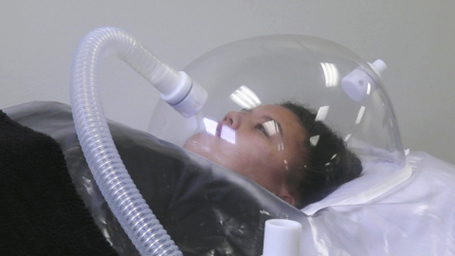
This isn't an astronaut, it's a study participant getting their metabolism measured with equipment connected to a Parvo cart!
At each sampling point, the subjects were positioned under a metabolic measurement system called a Parvo cart, which has a plastic hood attached to an apparatus. Basically, the hood captures exhaled gasses for the computer system's calorimeter to analyze. This allows the researchers to calculate resting energy expenditure, as well as the ratio of carbohydrate and fat burning.[5] The use of this equipment marks this study as a serious experiment – Parvo has been a premier measurement systems name in sports science for many years, and is generally regarded as the most accurate calorimetry machine on the commercial market.[6]
Lipolysis measurements were performed, again, at 0, 30, 60, 90, 120, and 180 minutes after ingestion.[1]
Exceptional attention to detail
There are several details in the study procedure that, when added up, qualify this study as one of the most carefully conducted we've ever seen. Its design was modeled off of a similar study using caffeine, which is considered the gold standard trial measuring caffeine's energy expenditure.[7]
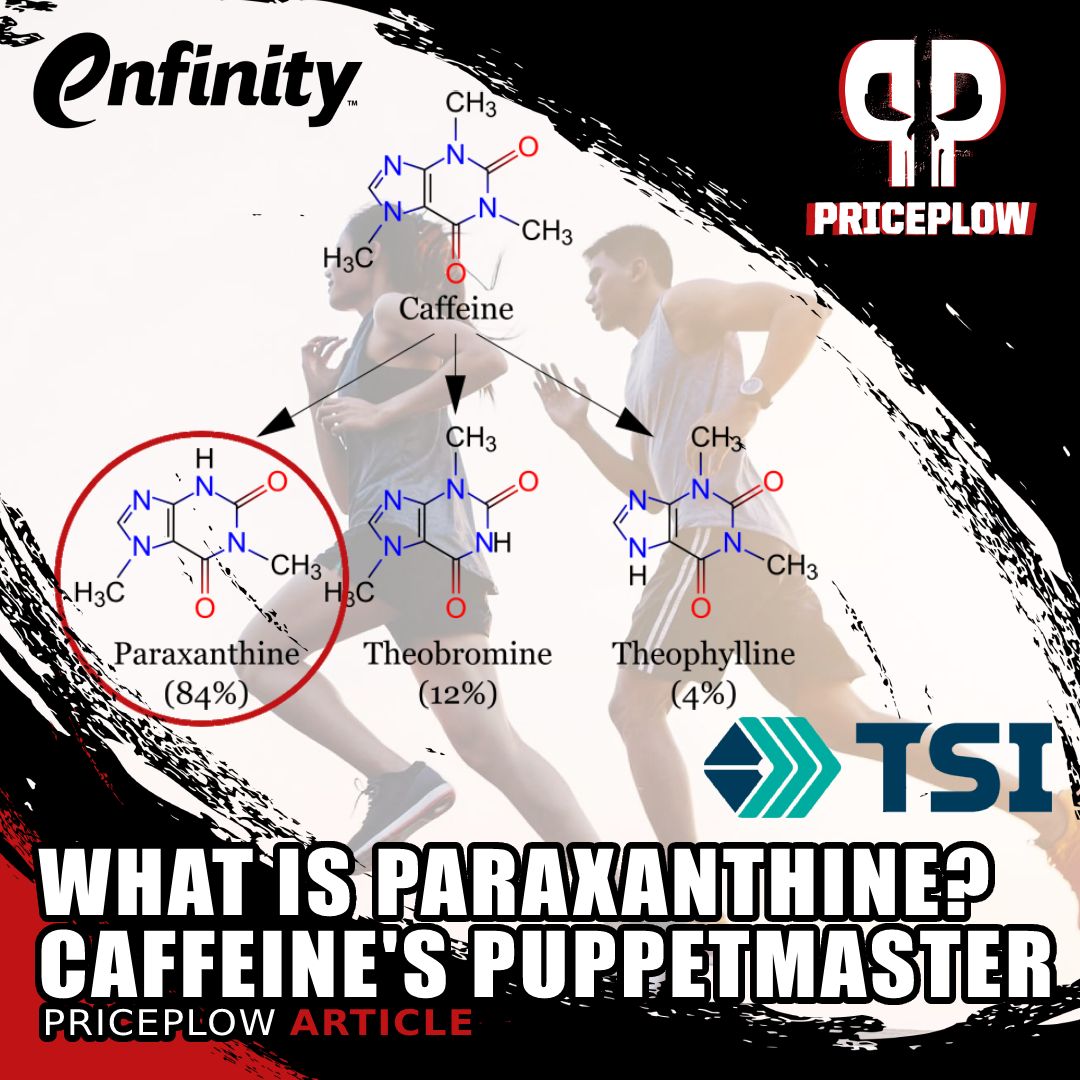
Paraxanthine is the primary metabolite of caffeine, providing most of caffeine's beneficial effects. Now you can take it directly with enfinity!
To give another example, consider the fact that it was important for the study participants to show up in a fasted state. Conducting nutritional experiments on fasted subjects is considered the best practice for a number of reasons, but it's especially important when your goal is to measure changes in lipolysis, since consuming food can actually suppress lipolysis and thus invalidate your measurements.
Usually, research teams take their subjects' word for it – but in this study, the scientists went so far as to objectively assess fasting compliance by measuring the participants' fasting glucose before the experiment. Any subject with a glucose level over 110 mg/dl was considered non-fasted and rescheduled to perform the experiment once he or she had re-entered the fasted state. This procedure demonstrates a high level of rigor that we don't always see in nutritional research.
If you want another example of the thoughtfulness of this study's design, consider the fact that the participants were given pre-prepared meals the day before the experiments. The idea behind this was to closely replicate their food intake and prevent changes in macronutrient consumption that could unduly affect the lipolysis measurements. Again, this attention to detail shows a commitment to rigor that goes way beyond the norm.
Results: Significantly increased resting energy expenditure
Let's start with the big one – the study found that every dose of paraxanthine significantly increased resting energy expenditure compared to the placebo. This shows that enfinity is, like caffeine, a potent thermogenic substance, capable of increasing the body's caloric expenditure at rest.
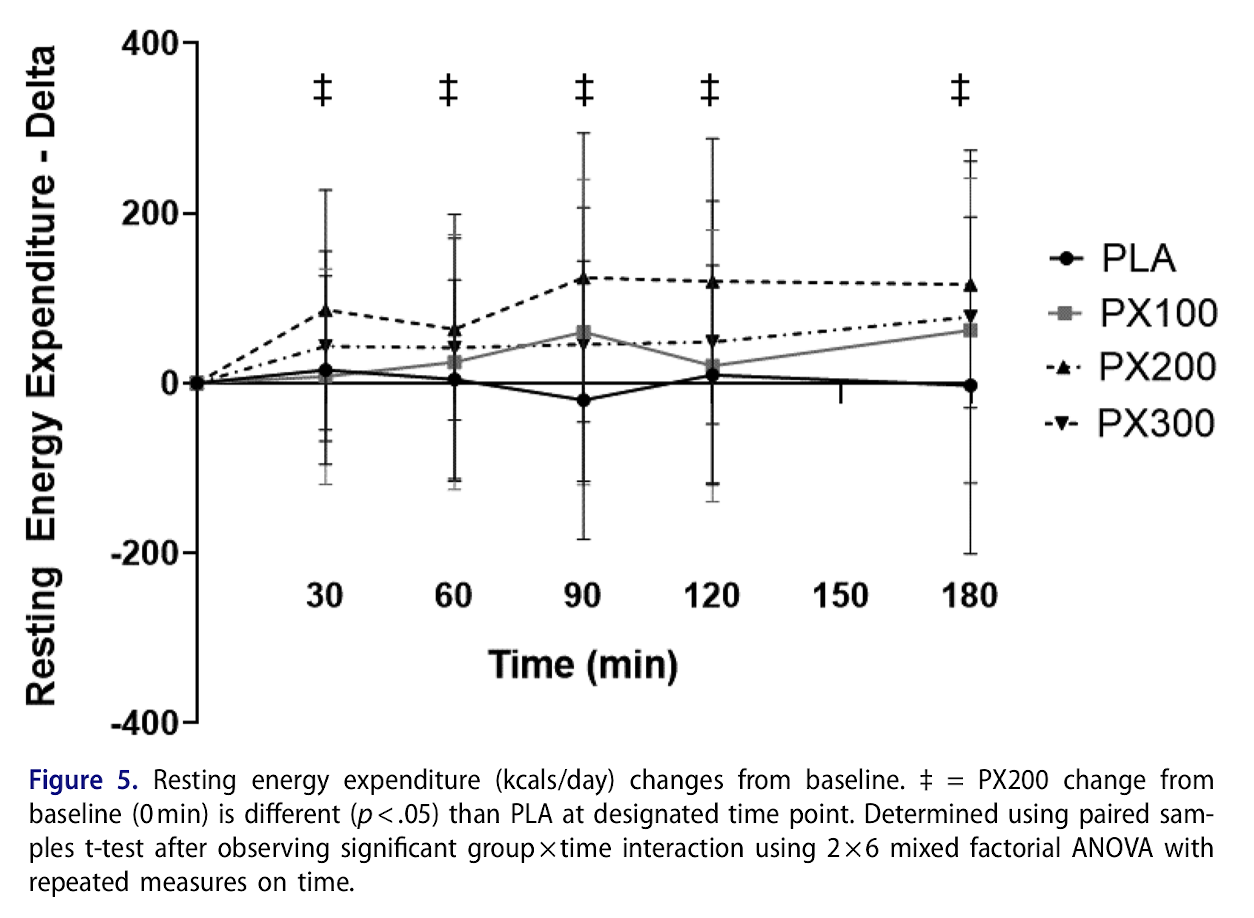
Paraxanthine significantly increased resting energy expenditure compared to placebo at all doses (100, 200, and 300 milligrams).[1]
Improved area under the curve
In order to illustrate that point, the researchers performed an area under the curve (AUC) analysis of the subjects' resting energy expenditure. AUC basically measures total effect – in calculus terms, it's the integral of energy expenditure as a function of time.
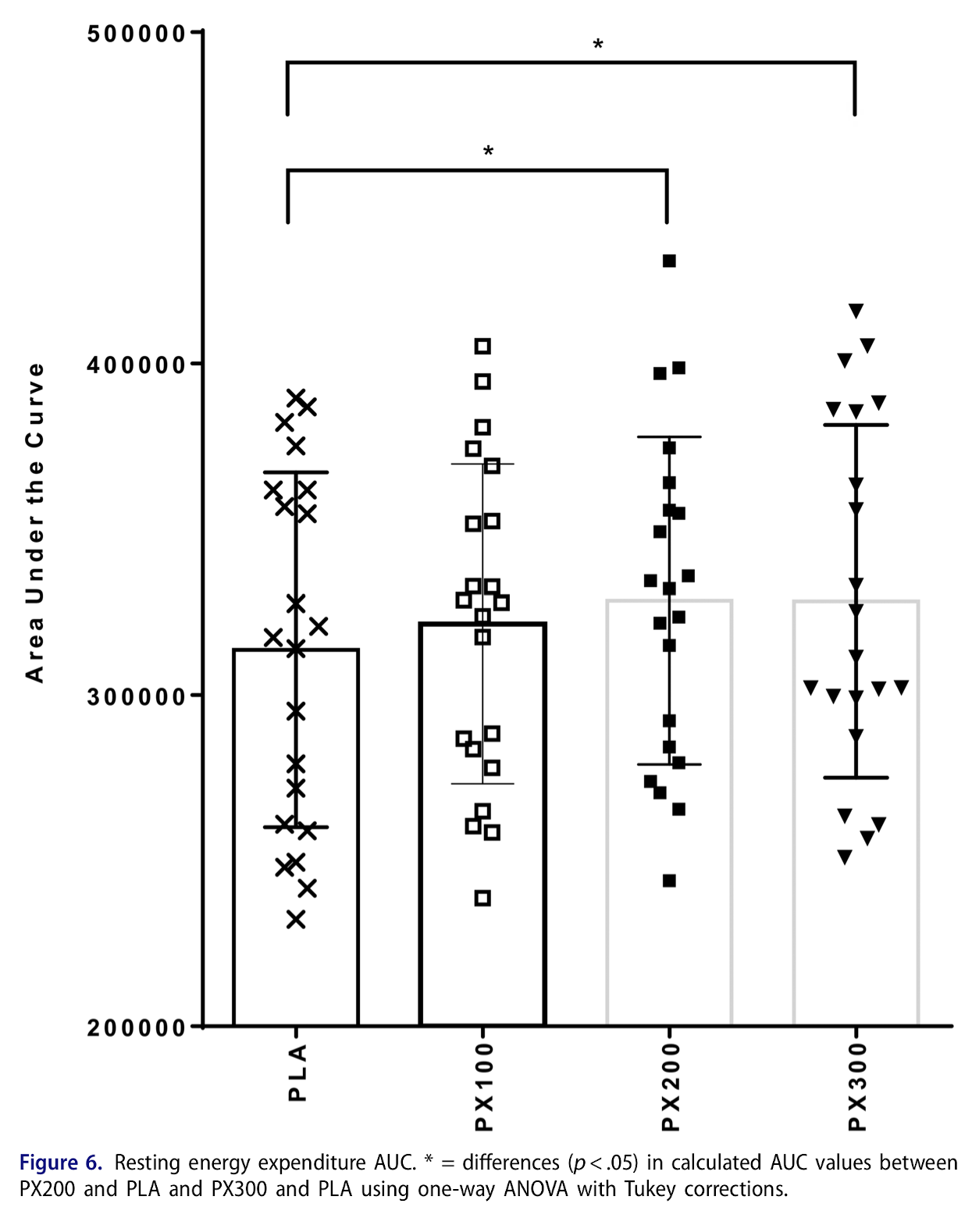
Area under the curve (AUC) analysis of the subjects' resting energy expenditure shows us that all doses of paraxanthine burned significantly more calories overall than the placebo.[1]
As you can see from the inset image, the AUC analysis clearly shows that all doses of paraxanthine increased the total number of calories burned during the experiment compared to the placebo.[1]
100 extra calories burnt in 3 hours!
All told, the increase in energy expenditure totalled up to a very impressive 100 calories in just 3 hours!
Now consider this: one pound of fat contains approximately 3,500 calories worth of energy. At 100 calories per day, all other things considered equal, you could lose almost a pound per month!
Additionally, people tend to gain 1 pound per year on average.[8] So if one was to take 200 milligrams of enfinity even every fifth day during the year, they would burn an additional 7,000 calories, preventing such annual weight gain -- again, all other things kept equal.
This is where the next great data point comes in, which can help suppress the "bounceback" we often see when increasing energy expenditure:
Reduced Hunger!
Oftentimes, when ingredients increase metabolism, people simply start eating more food to compensate, as they begin to get more hungry. However, there was actually a reduction in feelings of hunger with paraxanthine compared to control!
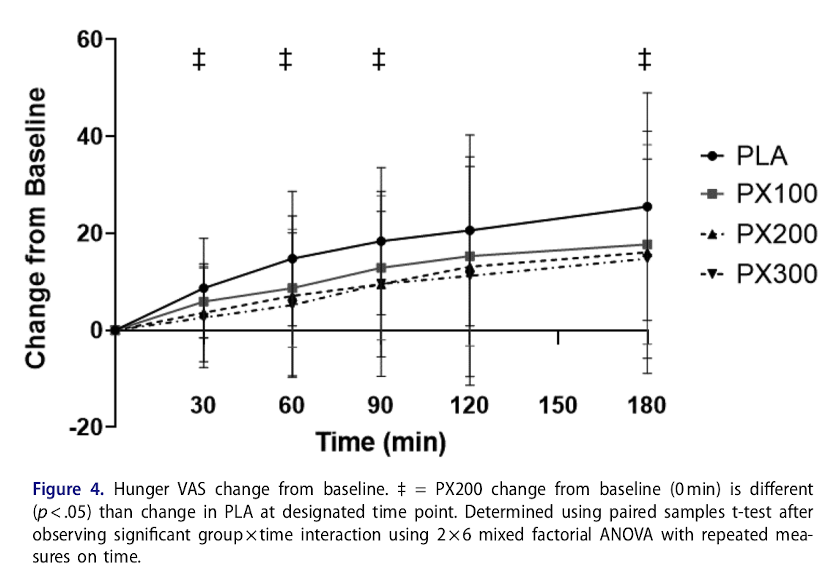
Paraxanthine (enfinity) significantly reduced hunger while increasing energy expenditure,[1] an incredible combination.
Bottom line: This data shows that paraxanthine is a potent thermogenic substance, capable of easing or accelerating fat loss by increasing daily caloric burn... while reducing hunger!
However, there was a little bit of inconsistency in the effect that paraxanthine had on fat oxidation specifically:
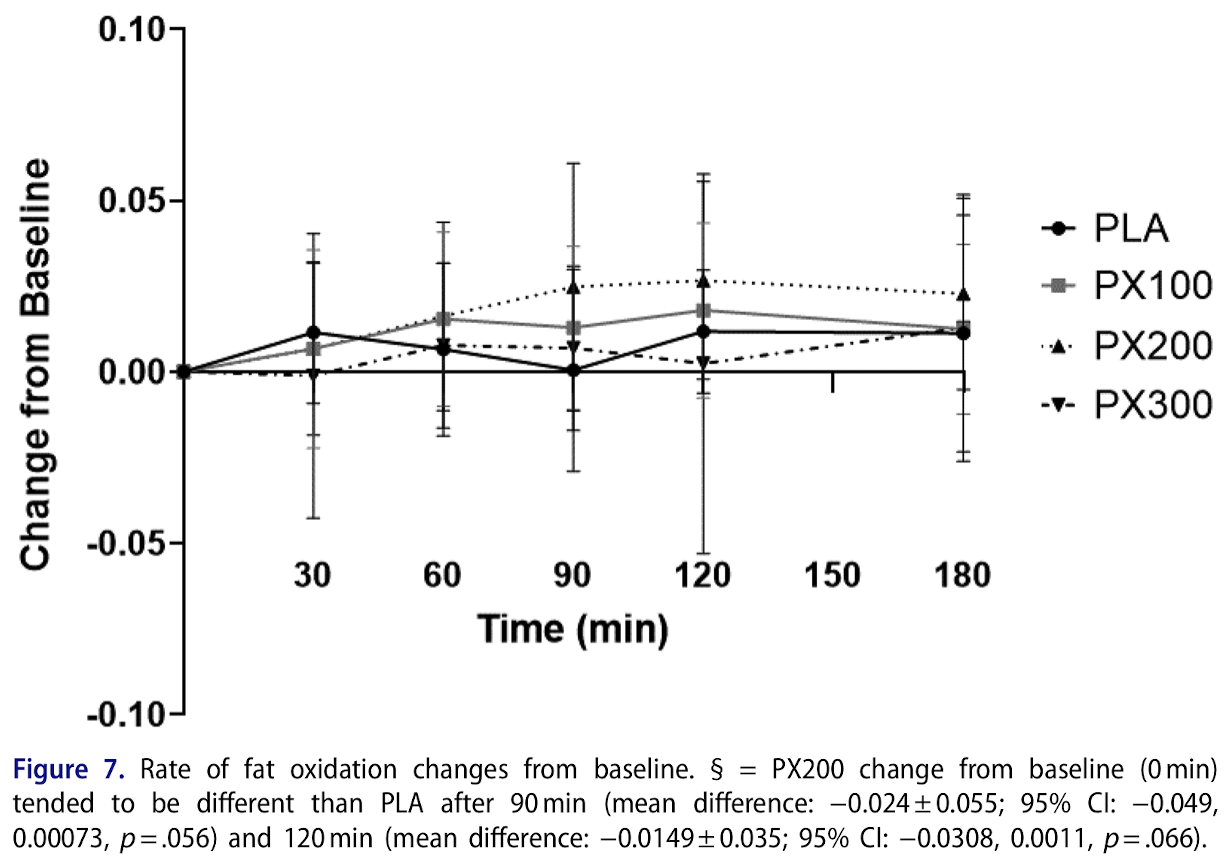
Paraxanthine's effect on fat oxidation was actually greatest at 200 milligrams, although not statistically significant.[1]
As you can see, treatment with paraxanthine at any dose did increase lipolysis relative to placebo at some point in the experimental period, but paradoxically, the 300 milligram dose was lower than the 200 milligram dose at all times, and returned to baseline faster than the other two lower doses.[1]
This isn't necessarily a problem since we're still seeing increased lipolysis at some point in all three active treatment conditions. For weight loss, what matters most is the overall calorie burn. After all, thermogenesis can use glucose or fatty acids as a substrate, so the more equivocal effect that the 300 mg paraxanthine condition had on lipolysis may not detract much from its potential as a fat loss adjunct. Additionally, the subjects weren't training during these measurements.
Reduced heart rate and no blood pressure changes!
Perhaps most interesting, is that all doses of paraxanthine, at some point during the experimental period, significantly decreased heart rate! Even the highest dose, 300 mg paraxanthine, barely increased heart rate relative to baseline or placebo.[1]
What's cool about this is that the study also found no changes in blood pressure for 100 and 200 milligrams, with only slight increases from the 300 mg dose.
When you combine the heart rate data and the blood pressure data, a very favorable picture emerges of paraxanthine's hemodynamic profile. This stimulant appears capable of significantly increasing energy expenditure without having major adverse effects on the cardiovascular system!
Could 300 mg paraxanthine actually increase lipolysis?
While the calorimetry data from the Parvo cart suggests that the 300 mg dose of paraxanthine didn't do much to increase lipolysis, we should note that the researchers performed an AUC analysis on the subjects' serum free fatty acid (FFA) concentrations, and found that 300 milligrams of paraxanthine did increase FFA compared to the placebo.[1]
The reason this matters is that increased lipolysis causes FFA levels to rise – so higher FFA implies that 300 mg paraxanthine actually did have a net positive effect on lipolysis.
Unfortunately, even with the crossover design, 21 subjects is a pretty small sample size. We suspect that if this study is repeated with a larger sample size, we'd probably see a much more robust effect of paraxanthine on lipolysis and FFA, even and perhaps especially in the high-dose group.
Notable Weight Loss Supplements with enfinity
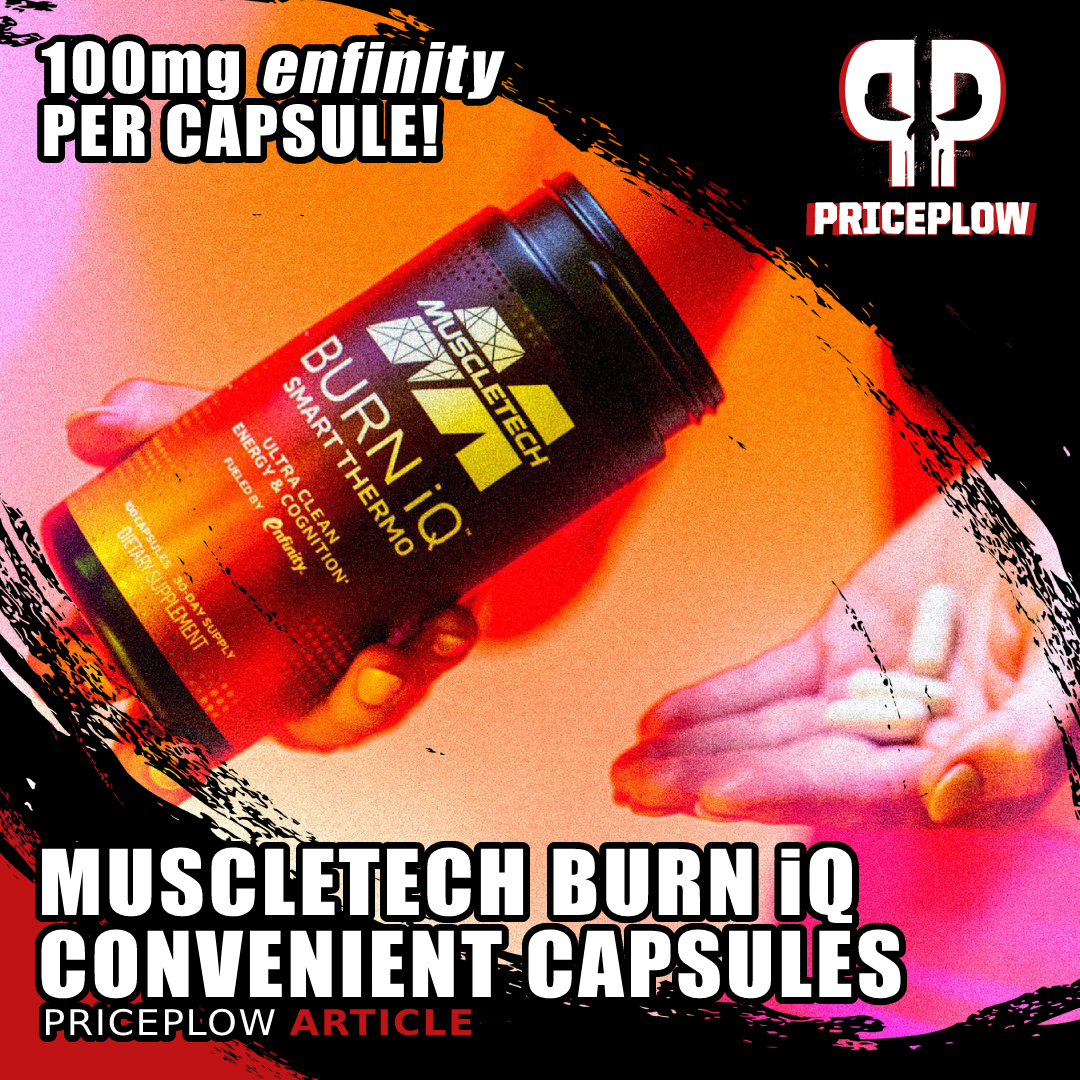
MuscleTech's Burn iQ Smart Thermo Powder includes the new caffeine replacement in enfinity brand paraxanthine!
PricePlow's already covered several thermogenic weight loss support supplements that utilize enfinity paraxanthine - brands that were ahead of the curve using it before this data was published.
The first, as many know, is MuscleTech's Burn iQ Powder and Burn iQ Capsules. After those two launched, they also released the new MuscleTech MuscleTech Alpha Test Thermo XTR, a combination testosterone booster + thermogenic.
Another brand that's gotten into the enfinity fray is Bucked Up, who has the famous Bucked Up Buck Naked fat burner formula, a follow-up to their Bucked Up Babe pre-workout.
Conclusion: The upsides without the downsides
Evidence in favor of enfinity as caffeine's replacement continues to mount. While the effect that high-dose paraxanthine had on lipolysis is somewhat equivocal, the bottom line is that all doses significantly increased overall energy expenditure during the experimental period.
Put simply, burning 100 calories in 3 hours with a reduction in hunger is about as promising as it gets!
This study is another data point showing that paraxanthine is, like caffeine, a potent thermogenic substance that helps the body burn more energy at rest. Yet, once again, we see fewer downsides, as in the cardiovascular measurements.
Paired with caloric restriction and constant energy intake, such substances can make fat loss significantly faster and, hence, easier.
While more data is definitely needed, it appears to us at this time that paraxanthine also has a much more favorable cardiovascular profile than caffeine – although, as the study authors note, past studies have demonstrated that caffeine can also decrease heart rate,[1] and we do usually see increases in blood pressure following caffeine administration. So if, as this study suggests, paraxanthine really doesn't have an impact on systolic or diastolic blood pressure, that would be a huge argument for using paraxanthine over caffeine.
Paraxanthine is globally distributed by TSI Group, the sponsors of this article. You can head back to our main paraxanthine article to read about the ingredient's other research and background, and be sure to see our podcast about it in Episode #072 of the PricePlow Podcast.
You can sign up for our enfinity updates below:

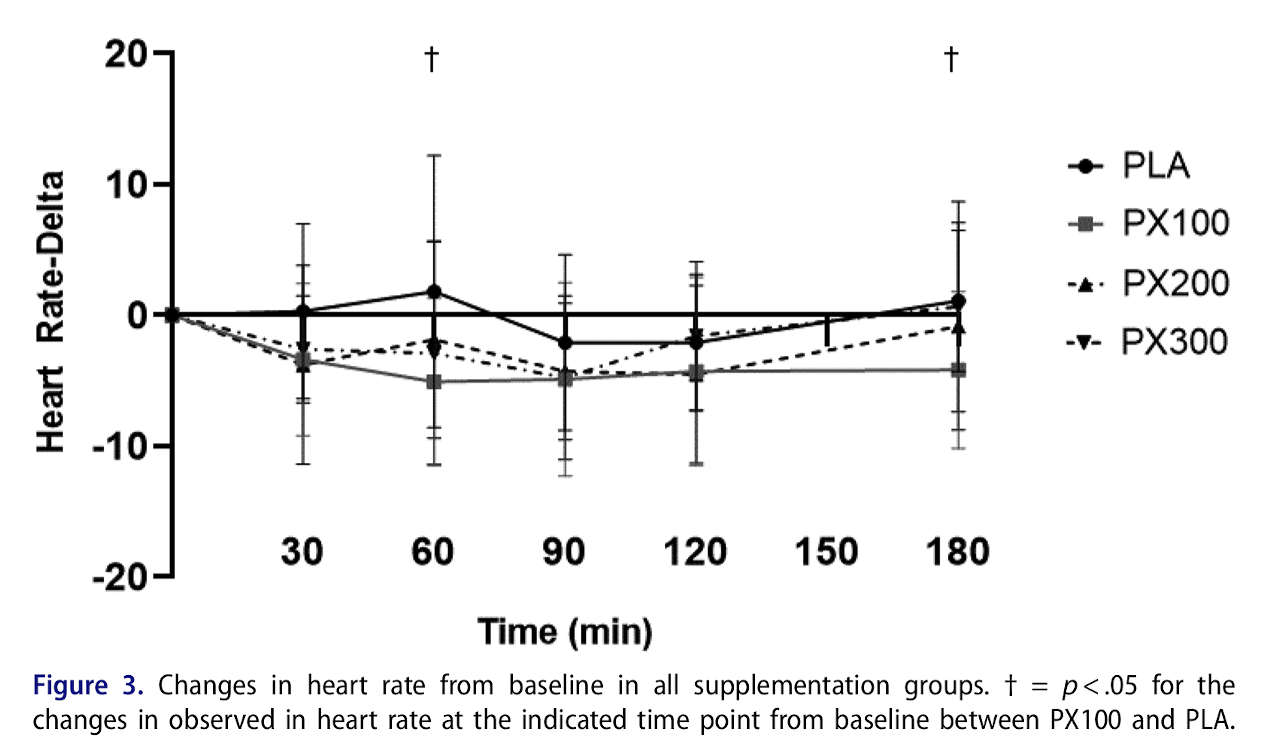

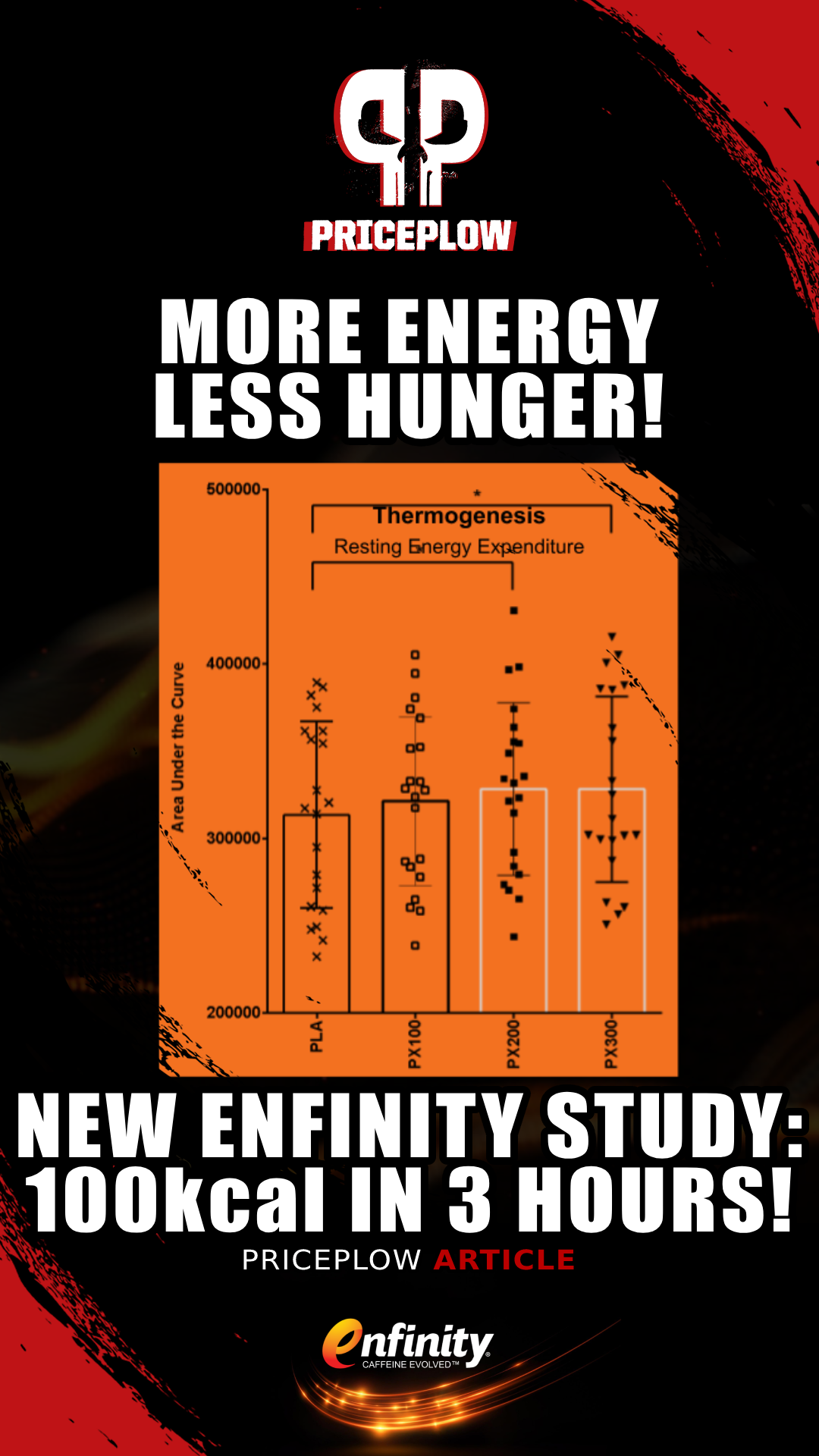


Comments and Discussion (Powered by the PricePlow Forum)